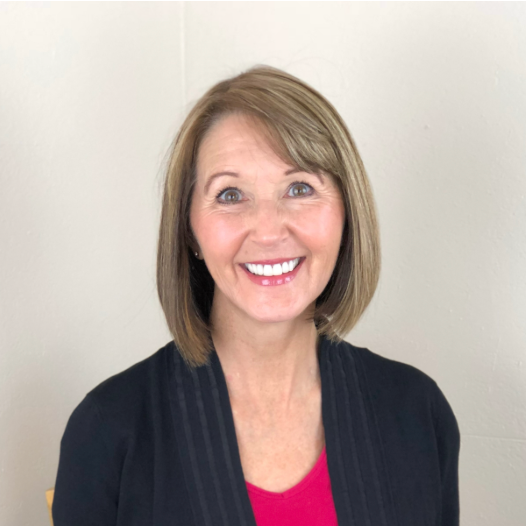How Karen Hoyt Turned a Hepatitis Diagnosis Into Advocacy
After decades of silent illness, Karen Hoyt’s hepatitis C diagnosis became a mission to advocate, educate and empower others to get tested and treated.
By
Karen Hoyt
| Published on July 28, 2025
6 min read
Karen Hoyt
Credit: AASLD

My journey with liver disease began with the silent invasion. For over three decades, hepatitis C (HCV) was silently destroying my liver. I was that high-energy teacher, a cyclist, living what appeared to be a vibrant life. Yet, beneath the surface, a virus was destroying my liver. My body ached, my heart raced and my mind slowly became a black hole in space that spiraled into blackouts and confusion. I was even losing my mind with liver disease and didn’t even know it. Sadly, this unexpected diagnosis is common: Many people live with hepatitis for years with no symptoms, only discovering it when their liver is severely damaged, sometimes beyond repair.
in 2010, my liver and kidney failed. I was diagnosed with end stage liver disease and hepatic encephalopathy. I resisted the news, denied the severity, and made excuses for behaviors I couldn’t comprehend, like sleeping on the side of the road or hitting parked cars. My family went through a lot as they struggled to cope with my swelling, turning yellow, vomiting blood. I even had personality shifts and loss of control of my whole life. This period was a living nightmare, not just for me but for my caregivers.
In those early days, HCV treatment cure was not available, and certainly not simple. I was denied initial treatment due to my high Model for End-Stage Liver Disease (MELD) score. When I finally began triple therapy in 2012, it was a brutal 48-week regimen of Incivek, interferon and ribavirin. The medications were harsh, causing severe anemia, constant varices bleeds and immense fatigue. I literally had blood transfusions throughout my treatment. This was the reality for millions then. I finally cleared the virus, but the damage was so far gone that I had liver cancer and had to have a transplant.
But today, the landscape has been transformed. Modern medicines have revolutionized HCV treatment with simple, highly effective pills. My message is clear and urgent: Get tested, get treatment and get cured for HCV. For most, it’s now a short course of oral pills with few side effects, offering a cure rate of over 95%. This is a miracle that saves lives and prevents the progression to cirrhosis, liver cancer and the profound suffering of hepatic encephalopathy.
For hepatitis B, while there isn’t a cure, the message is equally vital: Get tested, get treated and prevent more damage. Early detection means a person with hepatitis B can manage the virus easily with medications. This can prevent liver damage and allow them to explore their future dreams with hope.
My personal experience ignited a new purpose in my life: No one else should feel this confused, this alone. From my hospital bed, I began taking notes, vowing to create a “Best Friend’s Guide” to liver disease. This was the genesis of ihelpc. My commitment to patient advocacy quickly expanded, and I found my tribe in the Global Liver Institute.
I remember when Donna Cryer reached out to me. The Global Liver Institute (GLI) was a grassroots organization then, but Donna, with her visionary leadership and firsthand understanding of patient needs, saw the immense power of the patient voice. She invited me to Washington, D.C., to her first annual A3 advocate training. It has grown every year, and she has brought hundreds of patients into GLI. For the first time in history, patients with all types of liver disease — from viral hepatitis to fatty liver, autoimmune conditions and liver cancer — are part of a powerful alliance. We unite, rising up together with our individual diagnoses, to become part of a common cause.
Within GLI, we take our experience, our hard-won insights and our deeply personal stories, and we begin to heal. From this place of healing, we move into greater heights of advocacy. We find our voice as storytellers within small groups, sharing our unfiltered truths and then we elevate those voices into places of power, speaking to patient groups, leading patient forums, medical professionals, policymakers and industry leaders. This telling and retelling of our story is healing. The process changes our lives, and it elevates all patients as we speak for those who can’t speak for themselves.
My work with GLI and my website are all indicators of enduring hope and healing for hepatitis. They are my way of paying it forward, ensuring that no one else feels as lost or alone as I once did. The first World Hepatitis Day was the year I was diagnosed in 2010. I was dying.
Now, in 15 years, World Hepatitis Day has made a lot of progress — still there is more work to be done. On this World Hepatitis Day, I hope we can all commit to getting tested, getting treated and uniting our voices. We have got to commit to dismantling the social, financial and systemic barriers and work for hepatitis elimination and liver cancer prevention. This requires urgent action in testing, treatment and vaccination to achieve a hepatitis-free world.
I think of the countless who have died and want to encourage every patient and medical provider to help the lonely patients and caregivers who are fighting for their lives. Together, our voice is strong and we need to get the word out that there is treatment, so that everyone can find the path to brighter days after a hepatitis diagnosis.
Karen Hoyt is an author, educator, speaker, health influencer and founder of ihelpc, whose Liver Loving Diet has helped thousands thrive with hepatitis and liver disease.

